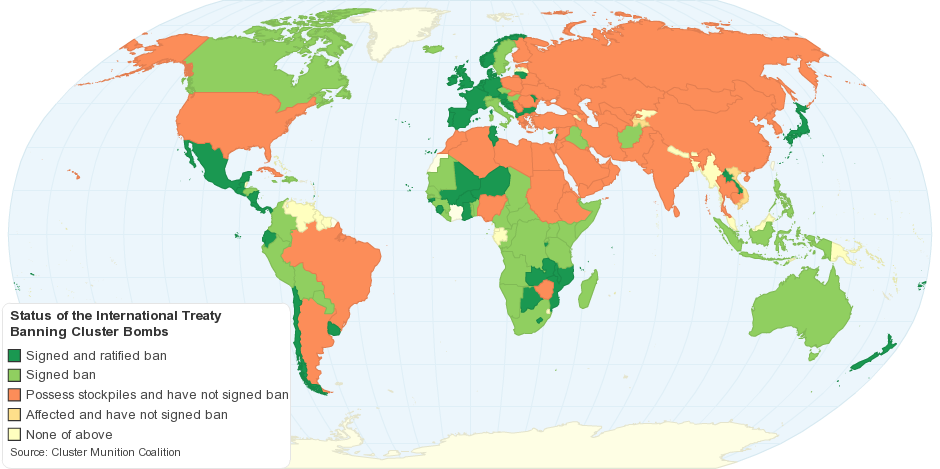This interactive map shows status of an international treaty (Convention on Cluster Munitions) that prohibits the manufacture, use, transfer and stockpile of cluster bombs.
What is Convention on Cluster Munitions?
The Convention on Cluster Munitions (CCM) is an international treaty that prohibits the manufacture, use, transfer and stockpile of cluster bombs, a type of explosive weapon which scatters submunitions ("bomblets") over an area. The convention was adopted on 30 May 2008 in Dublin, and was opened for signature on 3 December 2008 in Oslo. It entered into force on 1 August 2010, six months after it was ratified by 30 states. As of 19 April 2011, 59 states have ratified it and another 50 have signed but not yet ratified it.
What is Cluster Bombs?
Cluster bombs or cluster munitions or sub-munitions are air-dropped or ground-launched explosive weapons that eject smaller munitions: a cluster of bomblets. The most common types are designed to kill enemy personnel and destroy vehicles. Other submunition-based weapons designed to destroy runways, electric power transmission lines, disperse chemical or biological weapons, or to scatter land mines have also been produced. Some submunition-based weapons can disperse non-munitions such as leaflets. (Wikipedia 2011)
Because cluster bombs release many small bomblets over a wide area they pose risks to civilians both during attacks and afterwards. During attacks the weapons are prone to indiscriminate effects, especially in populated areas. Unexploded bomblets can kill or maim civilians long after a conflict has ended, and are costly to locate and remove. (Wikipedia 2011)
14 years ago

